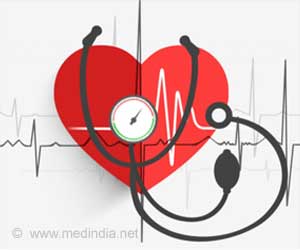Patient undergoing multiple tests to diagnose and investigate cardiovascular diseases was being the current trend and which seemed to be promoted by advanced imaging modalities.
The European Society of Cardiology (ESC) has recommended that an inter-disciplinary collaboration of various imaging techniques such as cardiovascular imaging and non-invasive diagnosis could ensure effective diagnosis of heart diseases involving work force of different specialists.The paper is a joint statement from the Presidents and Chairs of several specialty groups within the European Society of Cardiology – the European Association of Echocardiography, the Working Group on Cardiovascular Magnetic Resonance, the Working Group on Computers in Cardiology, and the Working Group on Nuclear Cardiology – together with colleagues from the European Association of Nuclear Medicine and the Association for European Paediatric Cardiology. Uniquely, the statement is being published simultaneously by three specialist medical journals – the European Heart Journal, the European Journal of Echocardiography, and the European Journal of Nuclear Medicine and Molecular Imaging.
The major recommendations are:
Cardiac units should develop joint clinical services with common diagnostic pathways for patients with suspected cardiovascular disease, which are organised in collaboration between cardiologists, radiologists, and specialists in nuclear medicine. This will require reorganisation of traditional hospital structures and a new way of working.
Future diagnostic specialists in cardiology should be trained in several imaging modalities.
Diagnostic tests should be evaluated by their impact on clinical outcomes, rather than their ability to provide better pictures or more diagnostic information. Different tests vary widely in their technical requirements, benefits, limitations, and costs. Surprisingly, relatively little is known about which diagnostic tests most favourably change the course of an illness, when clinical decisions are based on the findings of the test. At the same time, most diagnostic tests are imperfect – they cannot always give the correct answer.
Advertisement
New criteria need to be developed for judging the quality of diagnostic research.
Advertisement
Professor Michal Tendera, president of the European Society of Cardiology, described this document as ‘an important step forward in the discussion of the future of imaging.’
‘Advances in imaging technology now provide a wonderful spectrum of diagnostic tools to investigate heart and vascular disease, but much less is known about which test performs best in which circumstances and which test might have the greatest impact on improving treatment’ said Alan Fraser, President of the European Association of Echocardiography. ‘There is an urgent need for collaboration between experts in different techniques, with appropriate research funding, to establish how these expensive tools can best be used to provide the greatest benefits to patients and to reduce health care costs.’
The full manuscript of the statement is being published simultaneously in three journals: the European Heart Journal, the European Journal of Nuclear Medicine and Molecular Imaging and the European Journal of Echocardiography.
View the full report here.(PDF, 69.4 Kb)
The European Society of Cardiology (ESC)
The ESC represents more than 45,000 cardiology professionals across Europe and the Mediterranean. Its mission is to improve the quality of life of the European population by reducing the impact of cardiovascular disease.
The ESC achieves this through a variety of scientific and educational activities including the coordination of: clinical practice guidelines, education courses and initiatives, pan-European surveys on specific disease areas and the ESC Annual Congress, the largest medical meeting in Europe. Furthermore, the ESC promotes cardiovascular disease prevention messages to the general public, most notably during its annual ‘For Your Heart’s Sake’ event, a fun yet educational event offering risk assessment and prevention advice, held in parallel to the Congress each year.
The ESC comprises 2 Councils, 4 Associations, 23 Working Groups and 49 National Cardiac Societies. Both the ESC Congress and ‘For Your Heart’s Sake’ take place in late August/early September each year in a European ‘Heart-Healthy City’. The ESC Congress 2006, to be held from 2-6 September in Barcelona, Spain, will be a joint meeting with the World Heart Federation's XVth World Congress of Cardiology.
Source: Eurekalert





